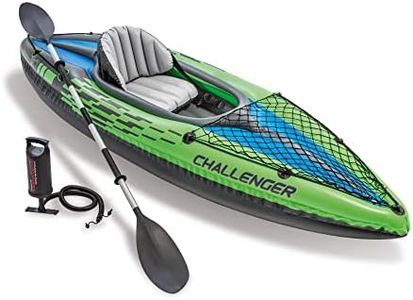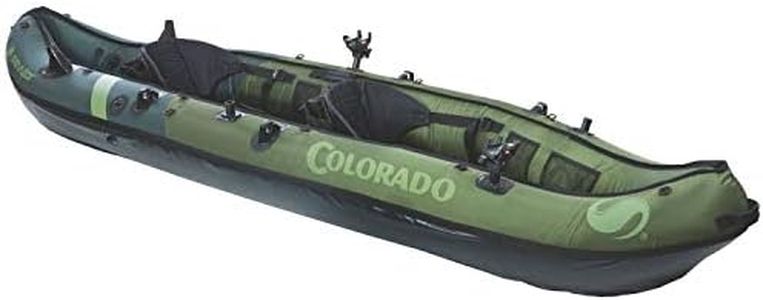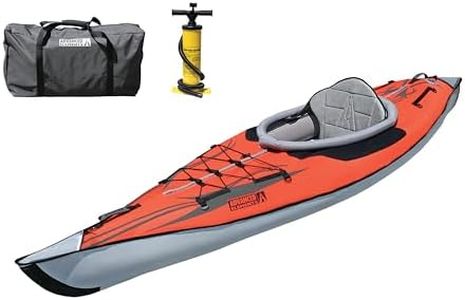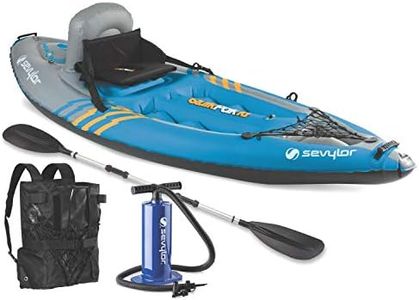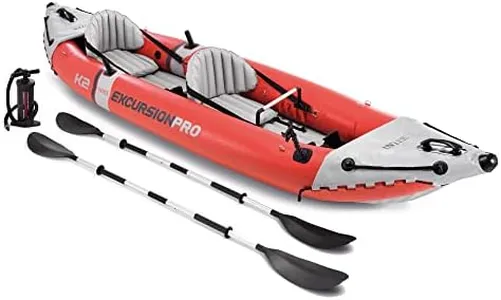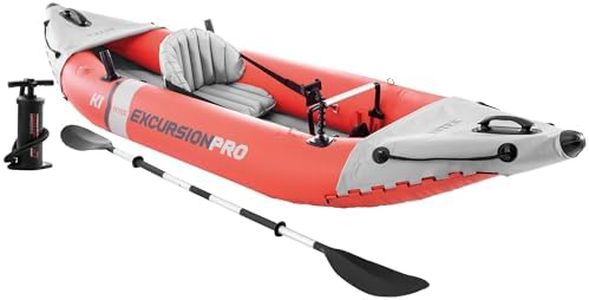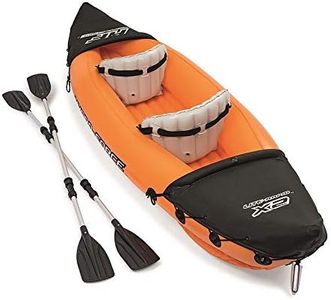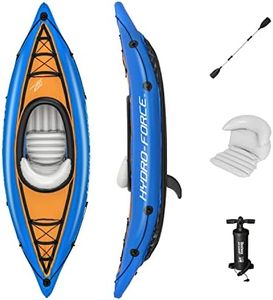We Use CookiesWe use cookies to enhance the security, performance,
functionality and for analytical and promotional activities. By continuing to browse this site you
are agreeing to our privacy policy
10 Best Fishing Kayaks
From leading brands and best sellers available on the web.Buying Guide for the Best Fishing Kayaks
Choosing the right fishing kayak can transform your experience on the water. As you shop, think about your local environment, the type of fishing you enjoy, and how comfortable you want to be during long hours spent paddling or waiting for a bite. Balancing stability, storage, and maneuverability is crucial, so considering these core aspects will help ensure you find the kayak that's the best fit for your needs.Kayak Type (Sit-on-Top vs. Sit-Inside)This detail describes whether the kayak's seat is on top of the deck or inside a cockpit. Sit-on-top kayaks offer more comfort, easy access, and self-draining scupper holes, making them popular for fishing since standing and moving around is easier. Sit-inside kayaks provide better protection from the weather and can be preferable in colder environments. Your choice should be based on where you fish, how much you value ease of movement, and the kind of weather you'll encounter.
Length and WidthThe length and width of a fishing kayak majorly affect its stability, speed, and maneuverability. Shorter kayaks (around 9–11 feet) turn quickly and are great for small lakes or rivers, while longer kayaks (12–14 feet or more) track better and glide faster, which is perfect for covering more open water. Width matters for stability—wider kayaks feel steadier for beginners or those who like to stand while fishing. If you prioritize stability for standing and fishing in calm water, opt for a wider, shorter kayak. If you want to travel faster in open water, look for one that's longer and narrower.
Weight CapacityWeight capacity tells you how much the kayak can safely carry, including your weight and all your gear. If you overload your kayak, it will become unstable and unsafe. To choose the right capacity, total up your own weight plus your fishing gear, and select a kayak with extra room to spare for safety. Generally, you should stay well below the listed maximum to keep the kayak performing well.
Storage and Rod HoldersStorage options and built-in rod holders are what set fishing kayaks apart from regular ones. More storage (like hatches, tank wells, and bungee areas) means more space for tackle, bait, lunch, and even a cooler. Multiple rod holders allow you to carry more rods and set them down hands-free. Think about how much gear you bring and how organized you want to be—if you're a minimalist, you may need less storage, but for multi-rod setups and long days, more is better.
StabilityStability describes how much the kayak will wobble when you move or stand. Fishing often means moving around, casting, and reeling with energy, so stable kayaks are less likely to tip. Wider hulls and flatter bottoms are most stable, suited for standing. Consider your comfort level and whether you plan to stand—nervous or beginner paddlers, or those who want to stand and fish, should favor stable designs.
Propulsion: Paddle vs. Pedal DriveSome fishing kayaks use traditional paddles, while others offer pedal-drive systems that let you move using your feet. Pedal-drive kayaks free up your hands for fishing and are easier for covering distance, especially in wind. However, they are generally heavier and more expensive, and you need more water depth to use the pedal drive. Paddle kayaks are lighter and simpler. Choose based on where you fish, how much hands-free operation matters to you, and your willingness to handle a bit more weight in exchange for pedal convenience.
Portability and WeightThe kayak’s weight and size impact how easily you can transport and store it. Lighter kayaks are easier to get on and off your car, as well as carry to the water’s edge, but might give up some stability or features in exchange. If you’ll be loading the kayak by yourself or have limited storage space at home, prioritize lighter, more portable options. If transport is not an issue, you can choose a kayak with more weight for extra features and comfort.

